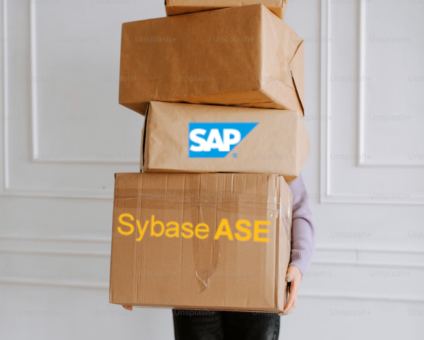Physical retail is still where the magic happens. According to new research by RSR, 85% …
Maximizing Customer Experiences with a Returns Management Microservice

Returns are one of the most common problems faced by retailers. Returns management software can help reduce this problem by automating the process of tracking and processing returns. According to the National Retail Federation, $816 billion worth of merchandise purchased in 2022 is expected to return to retailers. NRF also reports that for every $1 billion in sales, the average retailer incurs $165 million in merchandise returns.
In-store returns provide retailers with a unique opportunity to engage with customers in a positive and meaningful way. A well-handled return process can help to build customer loyalty, increase customer satisfaction, and even drive sales.
Introduction to Returns Management Microservice
A returns management microservice is a specialized service that helps retailers manage their returns process more efficiently and profitably, without interfering with other POS functionalities. This type of software provides retailers with tools to track, analyze, and optimize their returns process, including the ability to detect and prevent return fraud. It also helps retailers automate their returns process and offers seamless omnichannel returns. In addition, returns management microservices provide retailers with the ability to analyze and optimize data associated with their returns, allowing them to make informed decisions that will help improve their efficiency and profitability.
Benefits of Returns Management Microservice
One of the key benefits of in-store returns is that they provide retailers with an opportunity to build a personal connection with their customers. When a customer returns a product to a store, they are often looking for a resolution to a problem or an explanation for why the product was unsatisfactory. Retailers can use this opportunity to engage with the customer, listen to their concerns, and work to find a solution that meets their needs. This interaction can help to build trust and a sense of personal connection with the customer, which can be a major driver of loyalty and repeat business.
Another benefit of in-store returns is that they provide retailers with an opportunity to improve the customer experience. Retailers can use the return process to gather customer feedback, identify areas for improvement, and make changes to their processes and policies. This can help to create a more customer-focused and efficient return process, which can lead to increased customer satisfaction and loyalty.
In addition to the customer experience aspect, a returns management microservice offers a number of benefits, including:
- Improved control over the returns process: Provides retailers with greater control over their returns process, helping to minimize losses due to fraud and optimize their operations.
- Ability to detect and prevent return fraud: Includes capabilities that allow retailers to detect and prevent return fraud, helping to reduce losses due to fraud and protect their bottom line.
- Increased automation and efficiency: Automates the returns process, making it more efficient and allowing retailers to better manage their operations.
- Seamless omnichannel returns: Enables retailers to offer seamless omnichannel returns, allowing customers to return items bought in-store or online without having to go through multiple channels.
- Increased visibility into returns data: Provides retailers with greater visibility into their returns data, allowing them to make informed decisions that will help improve their efficiency and profitability.
- Visibility of full transaction: Provides full transaction visibility and paperless receipts with loyalty incentives.
Return Fraud Capabilities
Returns management microservices include a number of tools to help retailers detect and prevent return fraud. These include:
- Automated return policy enforcement: Automates the enforcement of return policies, helping to ensure that returns are handled in line with company policies and protecting retailers from losses due to fraudulent returns.
- Real-time alerts: Includes real-time alerts that can be used to detect potential return fraud. These alerts allow retailers to take immediate action to prevent losses due to fraudulent returns.
- Fraud pattern detection: Includes tools to detect patterns of return fraud, allowing retailers to identify and address potential issues before they result in losses.
Seamless Omnichannel Returns
Jumpmind’s returns management microservice includes tools to enable seamless omnichannel returns. This type of software allows customers to return items bought in-store or online without having to go through multiple channels. This helps to improve the customer experience, resulting in increased customer satisfaction and loyalty. In addition, seamless omnichannel returns enable retailers to better manage their operations, as they can track and manage returns in one system, rather than having to manage multiple returns processes for different channels.
Enhancing Efficiency and Profitability with a Returns Management Microservice
This type of software enables retailers to better control their returns process, helping to minimize losses due to fraud and optimize their operations. In addition, returns management microservice provides retailers with the ability to analyze and optimize data associated with their returns, allowing them to make informed decisions that will help improve their efficiency and profitability. Finally, returns management microservice can be used to automate the returns process, resulting in increased efficiency and cost savings.
In-store returns also provide retailers with an opportunity to drive sales. By handling returns in a positive and efficient manner, retailers can show their customers that they are committed to providing a high level of service and care. This can encourage customers to return to the store for future purchases, and can even lead to positive word-of-mouth recommendations to friends and family.
Implementing Returns Management Microservice
Implementing a returns management microservice may seem like a daunting task, but it is made simple with the support of Jumpmind’s experts. We help retailers to understand their returns process and the capabilities of the software, as well as provide assistance with the integration of the software with existing POS systems or Jumpmind Commerce. Working with an experienced POS provider ensures that the implementation process is successful and that the software is used to its full potential.
Conclusion
In-store returns provide retailers with a valuable opportunity to engage with customers in a positive and meaningful way. Retailers who handle returns in a responsive and customer-focused manner can build stronger relationships with their customers, improve the customer experience, and drive sales. With the right policies and procedures in place, in-store returns can be a powerful tool for retailers looking to grow their business and increase customer satisfaction.


















